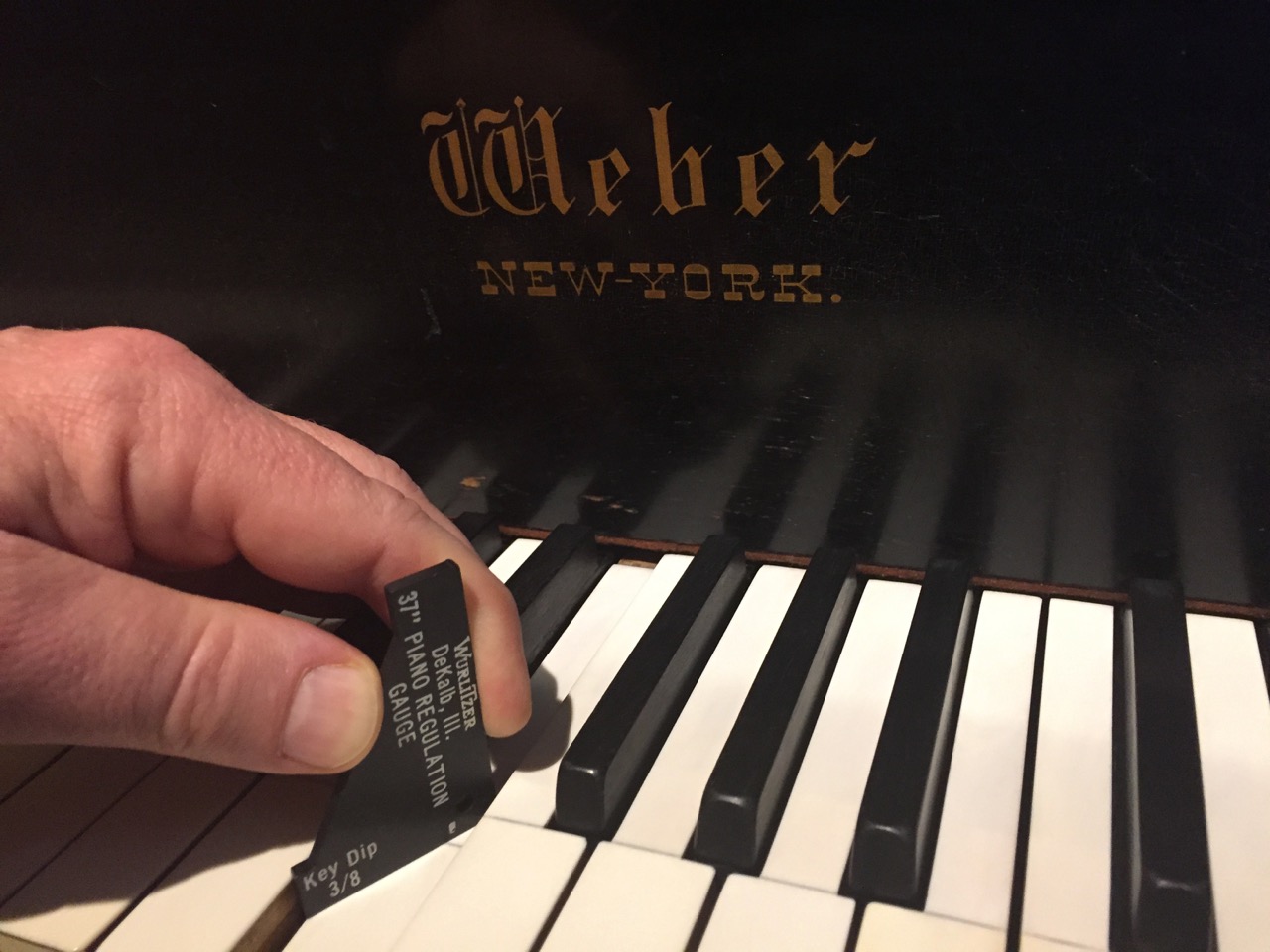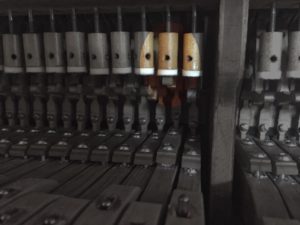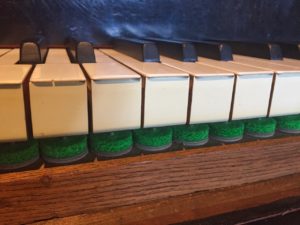Weber Piano Action Rebuild – Refinement: Jammin’ Jacks
Every piano is different, and although there are recommended measurements for key dip, blow distance, hammer height, etc., changes are sometimes needed to suit a specific action. At this point, Danny Boone’s Regulating Grand Piano Touch and Tone suggested fully regulating 3 notes in the center of the keyboard to determine the best measurements. It was time to get an expert technician, Jack Mills, involved since he would have a better idea of what to look for than I would.
As we met at the piano shop, he immediately spotted a problem. The jacks (#5 in the diagram below) were jamming against the let-off buttons (#4), and were at risk of breaking if the piano was played with much force. I was glad I had been pretty gentle with it so far, and none of the jacks had broken. This meant we would need to change the action geometry somewhat, with adjustments to key dip and hammer height. The entire key set could be raised or lowered on the balance rail as well, but this could complicate clearance under the fall board and the key slip. The keys had to fit under the fall board, and not be so high for the key slip to hide their bottom. Once the jamming problem was solved, centering the jacks would be next.
Jack showed me how to center the jack side-to-side (#5 in the diagram at right) on the knuckles (#8) by placing one side of the wippen (#3) on a block of wood and tapping the center of the jack to adjust the position of the jack pin slightly. The jack is then adjusted front-to-back. Using the adjusting screw on the jack, one aligns the back edge of the jack with the back edge of the wooden core of the knuckle (#8) .
Finally, he showed me the hammer drop adjustment (#7) and advised adding extra “drop” to exaggerate the let-off. This makes it easier to adjust the let-off before setting the final hammer drop. Both would affected by the tension adjustment on the repetition lever (#9) spring.
I was taking notes and trying to keep up, and it was obvious I was in for some serious “wood-shedding” on these sensitive adjustments. I just hoped I had captured it all. Later, Bernard and I discussed strategies for correcting the jammed jacks, and decided I would first adjust the key dip by adding various thicknesses of punchings to each front key pin, while adding a bit more punching thickness to the sharps. This would correct for their overly-low key dip and would prevent the sharps from “burying” into the ivories. After that, I could reset the hammer line a bit lower, and that should correct the jack problem. The rest of the afternoon was spent adjusting jacks fore, aft and center.
Back at home the next day, I added punchings and re-adjusted the hammer line as planned. To my relief a tiny bit of space remained between the jacks and let-off buttons when each note was played — alleviating the jamming problem. Back in the piano, there was about a paper-thickness of clearance between the keytops and the bottom of the fall board, and the key slip still covered the bottom of the ivories.
I played it for a while, and there was definite improvement in the action. With the slightly-reduced key dip, it was more comfortable to play, and another round of hammer line adjustment helped with the evenness. I was beginning to see how the “circle of refinement” made subtle but cumulative improvements — like compound interest in a savings account. Each change is small, but taken together, they add up.



